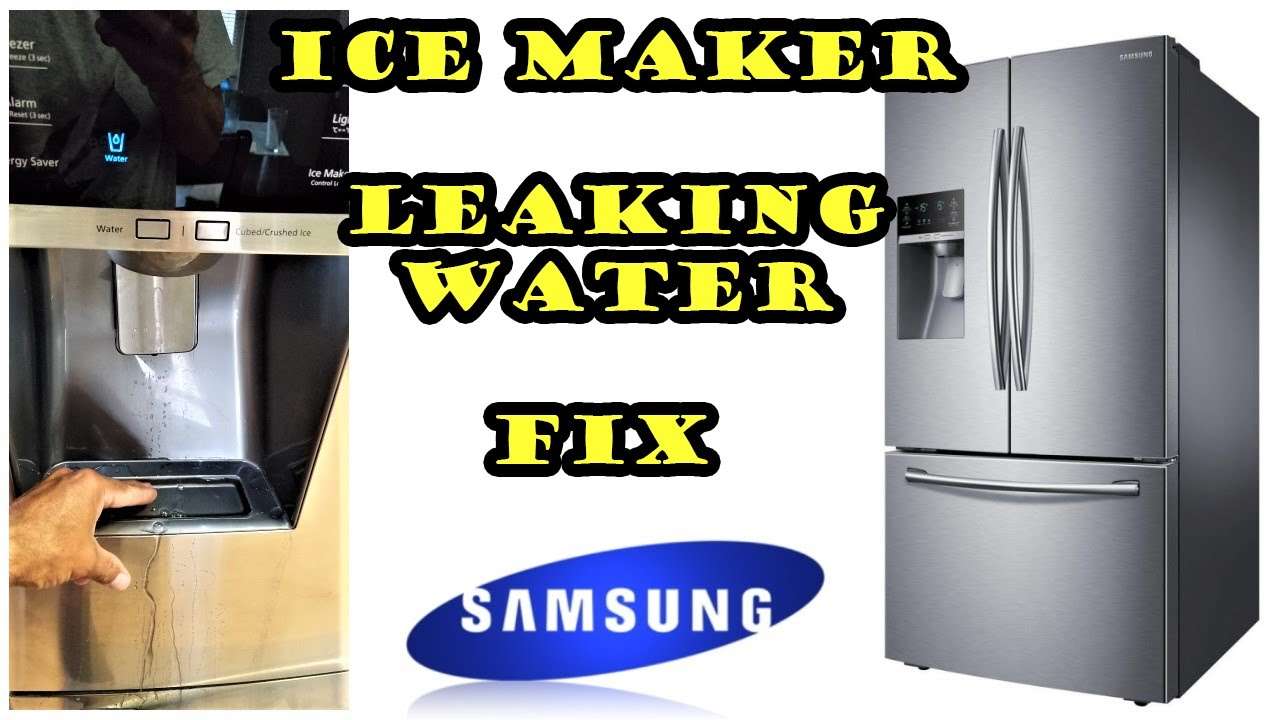A Samsung refrigerator water leak from the ice dispenser can be a frustrating and potentially damaging issue for homeowners. Often, the problem isn’t immediately obvious, leading to wasted water and potential damage to flooring or surrounding cabinets. Unlike simple leaks from a hose connection, dispenser leaks require a systematic approach to identify the root cause. This article will explore some previously unconsidered avenues for troubleshooting a Samsung refrigerator water leak from the ice dispenser, offering a unique perspective on common problems and potential solutions.
Understanding the Common Culprits (and Beyond)
While many articles focus on the usual suspects like a frozen water line or a faulty water inlet valve, let’s delve deeper into less frequently discussed causes:
- Dispenser Flapper Malfunction: The flapper door, responsible for sealing the ice dispenser chute, can become warped, cracked, or misaligned. Even a slight imperfection allows water to drip. Consider the material of the flapper – is it susceptible to temperature changes or degradation over time?
- Damaged Ice Chute: Inspect the ice chute itself. Cracks or separations, especially near joints, can create pathways for melting ice to escape and manifest as a leak. Think about the stresses the chute endures – repeated vibrations from ice dispensing, temperature fluctuations, and even physical impact.
- Condensation Buildup: Excessive condensation can accumulate inside the dispenser housing, eventually dripping down and appearing as a leak. This could be exacerbated by poor door seals or high humidity levels in the kitchen.
A Novel Approach: Examining the Drain System
Often overlooked, the refrigerator’s drain system plays a crucial role in managing excess water. A clogged or partially blocked drain can lead to water backing up and finding alternative escape routes, often through the ice dispenser. Consider these points:
Checking the Drain Tube
The drain tube, usually located at the back of the refrigerator, can become clogged with debris. Here’s a step-by-step approach to inspecting and clearing it:
- Locate the drain tube outlet.
- Carefully disconnect the tube.
- Use a flexible wire or pipe cleaner to gently clear any blockage.
- Flush the tube with warm water to ensure it’s completely clear.
Investigating the Drain Pan
The drain pan, situated underneath the refrigerator, collects water from the defrost system. If the pan is overflowing, it could indicate a problem with the defrost cycle or a clogged drain. Ensure the pan is properly positioned and not cracked or damaged. Also, consider the environment. Is the refrigerator level? A slight tilt can cause the pan to overflow more easily.
Preventative Measures and Long-Term Solutions
Addressing a Samsung refrigerator water leak from the ice dispenser proactively is key to preventing future problems. Regular maintenance can save you time, money, and potential water damage. Here are some preventative measures:
- Regularly Clean the Ice Dispenser: Remove ice buildup and debris from the dispenser chute and surrounding areas.
- Inspect and Clean Door Seals: Ensure the refrigerator doors are sealing properly to prevent warm air from entering and causing condensation.
- Monitor Ice Production: Excessive ice production can overload the dispenser and contribute to leaks.
Finally, remember that a **samsung refrigerator water leak from ice dispenser** can sometimes be a complex issue requiring professional diagnosis. If you’ve exhausted these troubleshooting steps and the problem persists, contacting a qualified appliance repair technician is the best course of action. They have specialized tools and expertise to identify and resolve more intricate problems, ensuring your refrigerator operates efficiently and without leaks.







